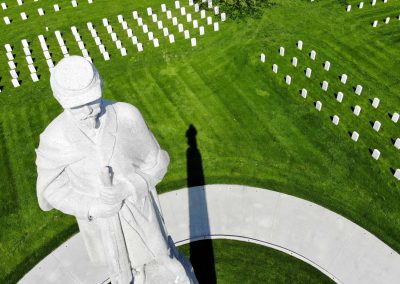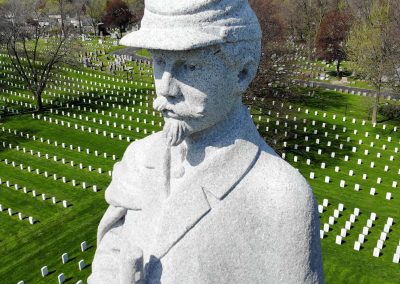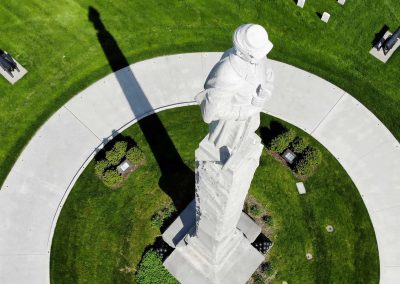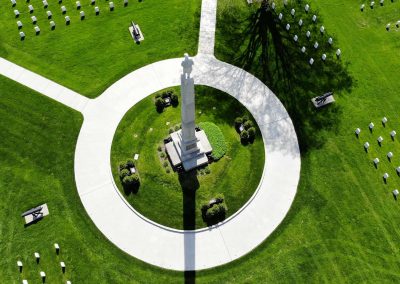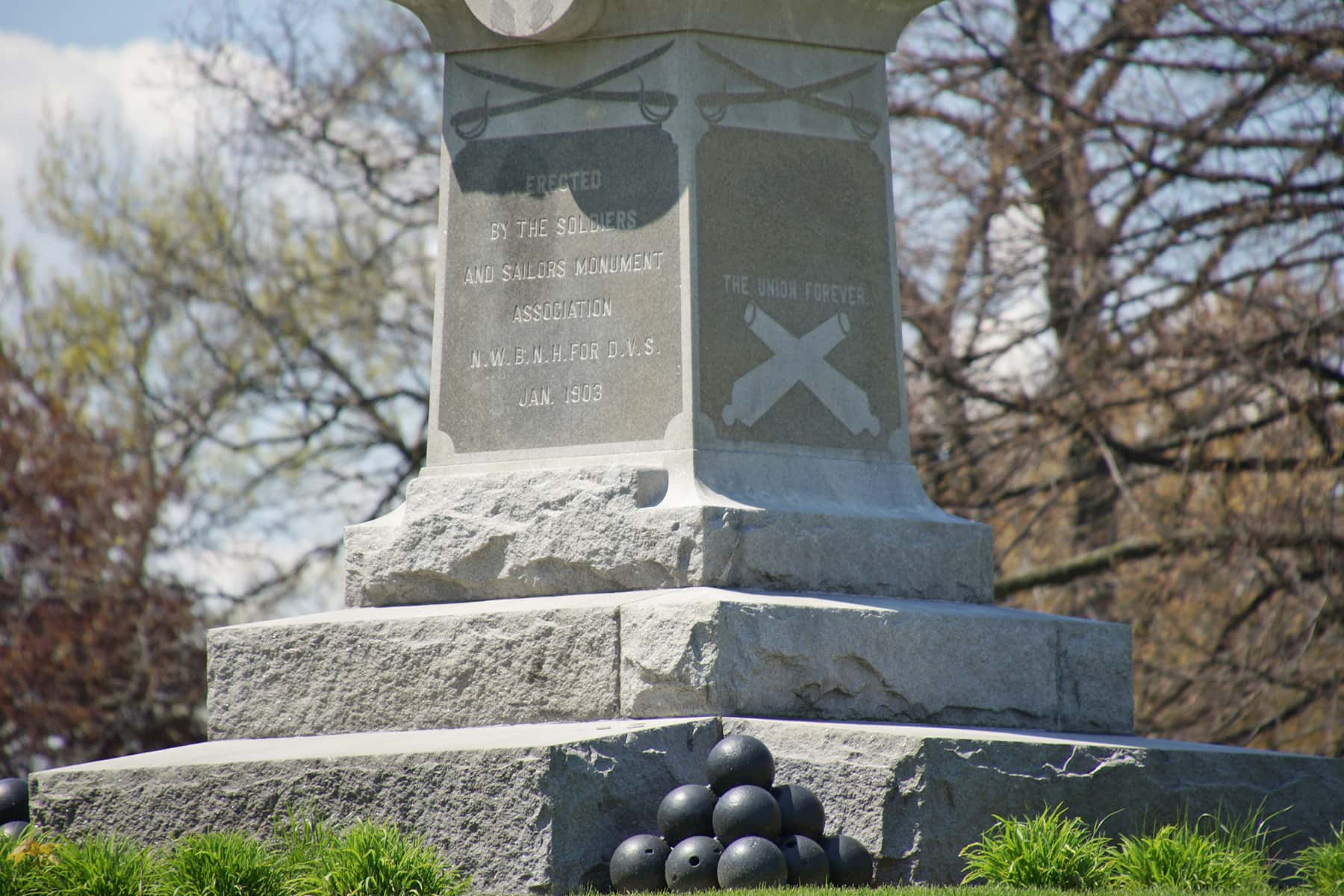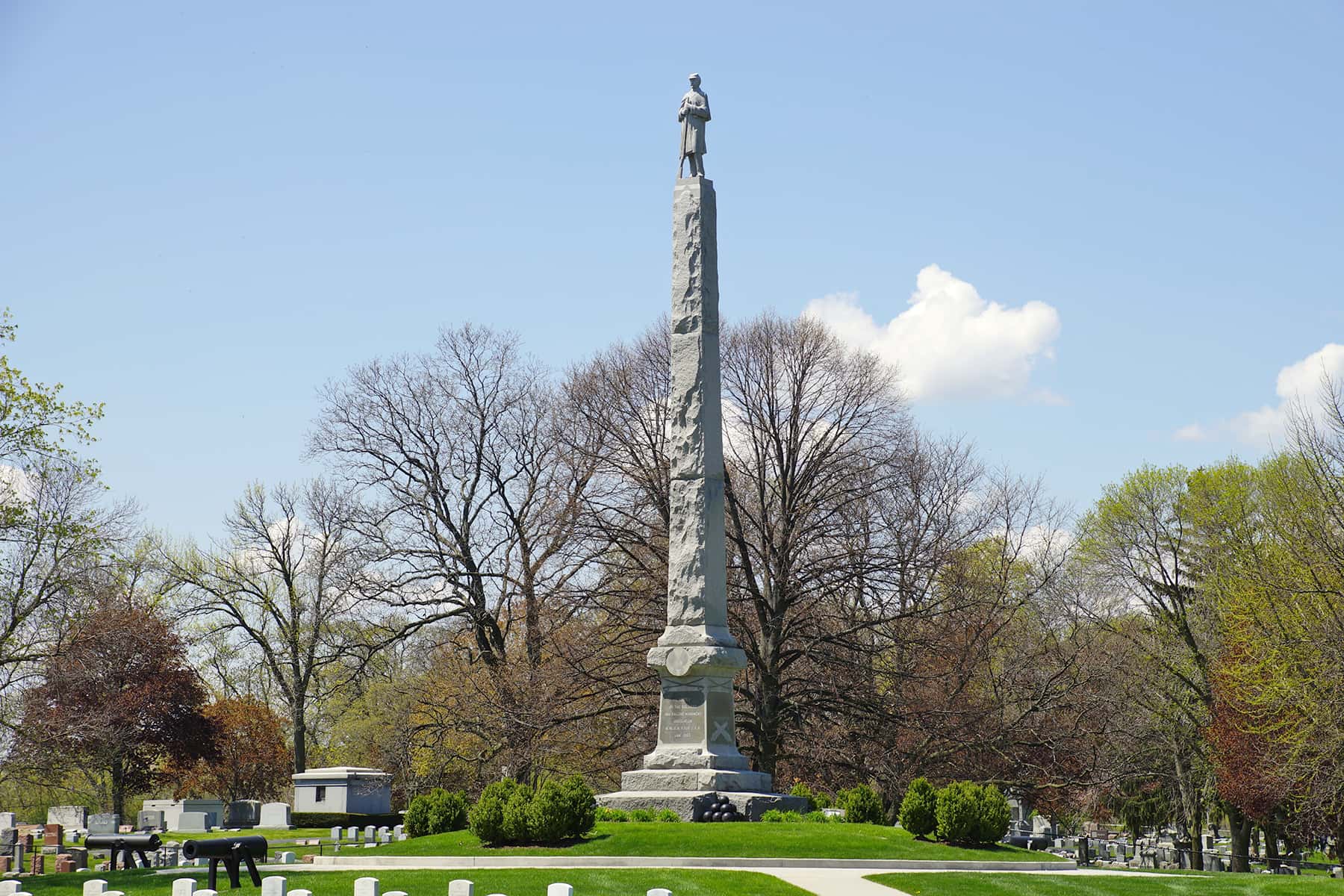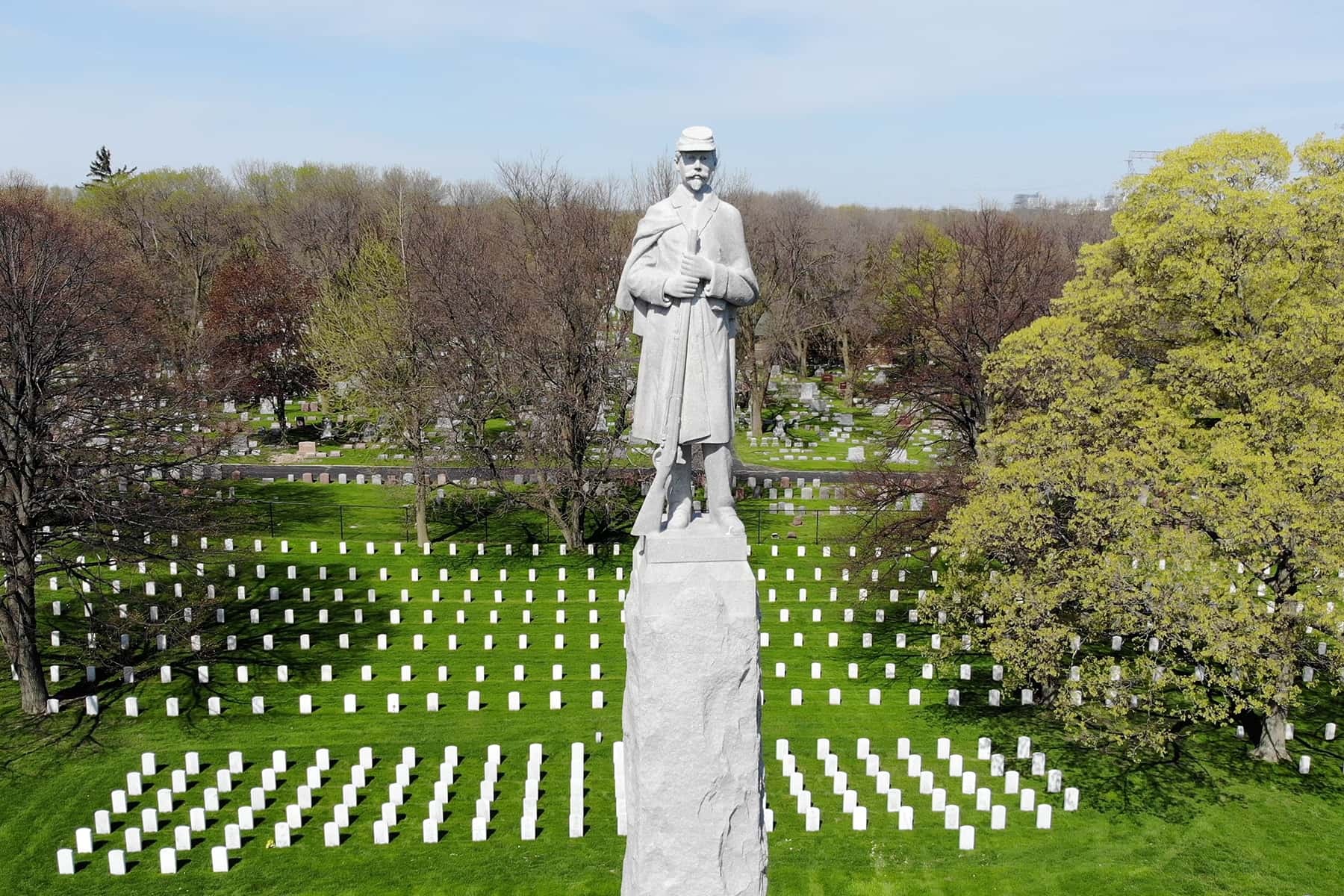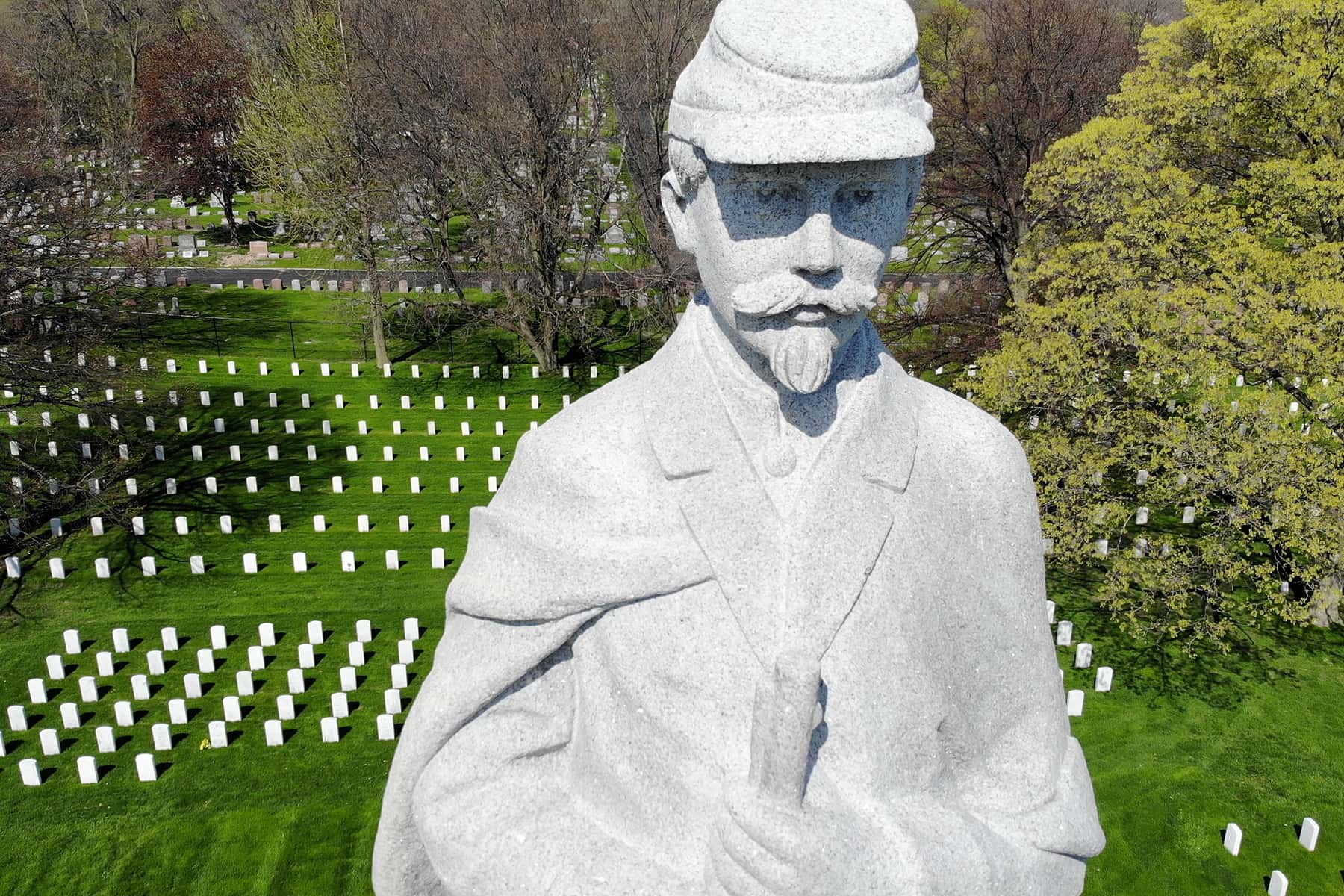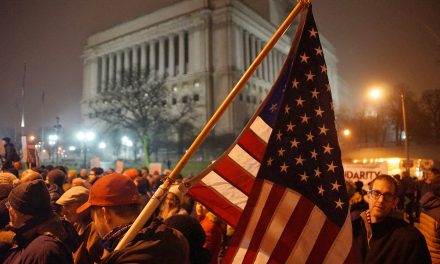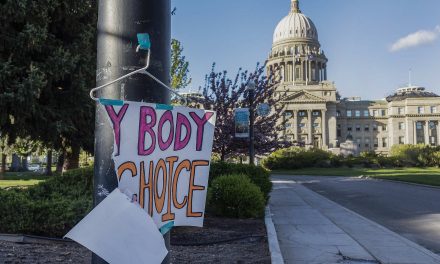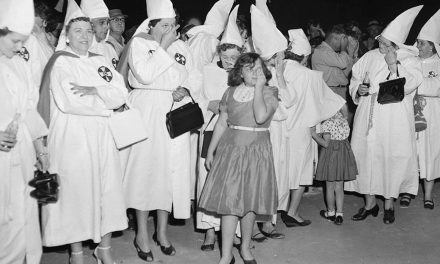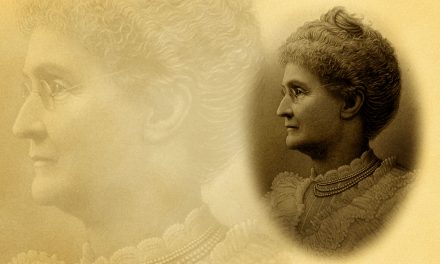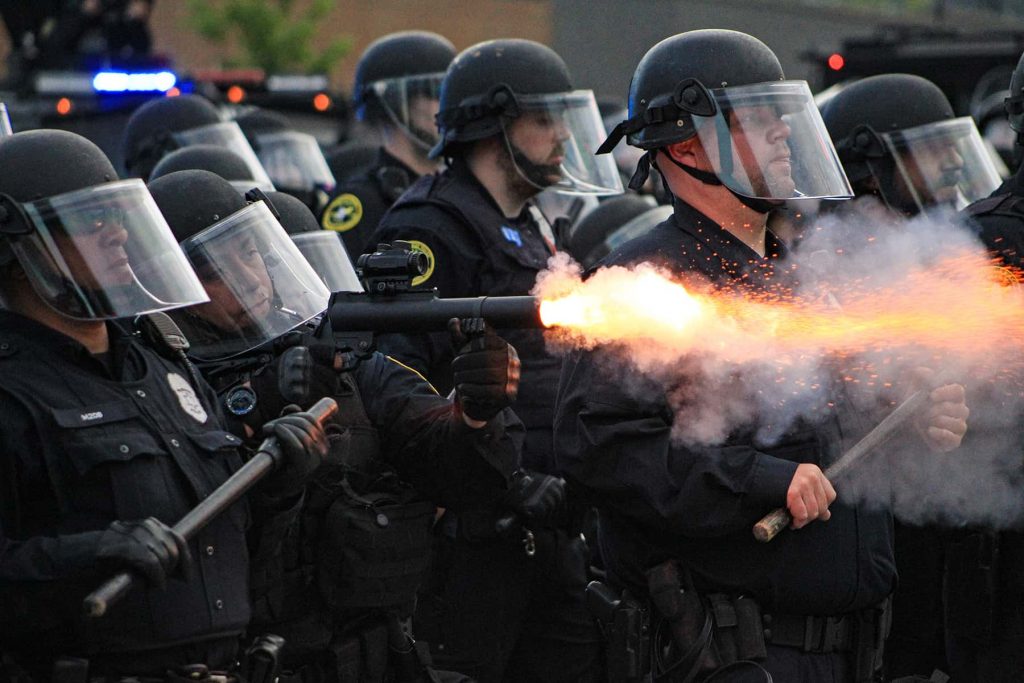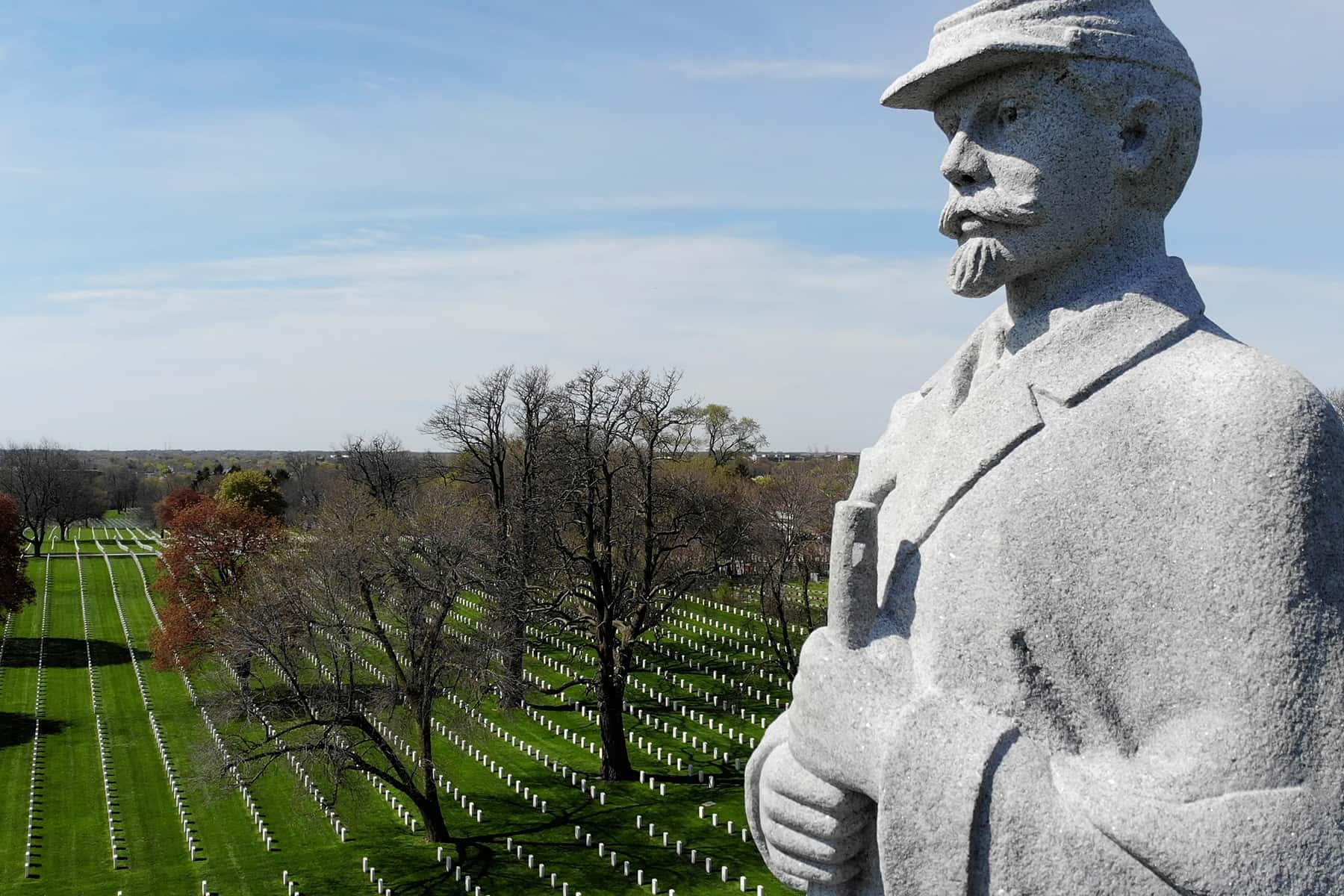
Wood National Cemetery dates to 1871 when it was established as a final resting place for veterans who died while living at the Northwestern Branch of the National Home for Disabled Volunteer Soldiers in Milwaukee.
The Northwestern Branch was established to care for disabled Union veterans of the Civil War, and the first designed and built specifically for the purpose of housing and caring for veterans. The cemetery contains more than 30,000 graves, including members of the first Union unit of African American soldiers and several recipients of the Medal of Honor.
In 1903, a 60-foot soldiers and sailors monument was erected at the north end the cemetery. It weighed 85 tons, and 14 cannon balls were placed in each corner pyramid. The cannon is one of four 24-pounder flank howitzers, 1844 model. the Joseph Shaver Granite & Marble Company of Milwaukee sculpted the monument.
“Memorial Day services at the Soldiers Home were most impressive and included the dedication of a handsome granite monument, erected by the various GAR posts of the city in memory of their dead comrades. 1500 uniformed, gray haired veterans, with a bearing as erect and proud as that with which they marched forth to meet the enemy forty years ago, proceeded to the home cemetery. “Hundreds of graves around the spot had been bedecked with flowers during the early morning, making a beautiful sight.” – Memorial Day dedication on May 30, 1903
The most prominent monument on the cemetery’s grounds is the Soldiers and Sailors Monument. Located just south of Interstate 94, the rusticated granite monument features a stepped base topped by a pedestal and three-part shaft crowned by a statue of a Union soldier standing at parade rest. The four elevations of the pedestal feature engraved designs of an anchor, crossed swords, and crossed cannons. The pedestal also contains inscriptions noting the erection date, sponsor of the monument, and a simple dedication: “In Memory of Comrades Buried in this Home Cemetery.”
The Civil War left thousands of volunteer soldiers with injuries and disabilities. Some required long-term care that was often more than families could provide. In 1865, the U.S. Congress passed legislation creating homes for disabled volunteer soldiers to provide medical care and all the basic necessities of life: shelter, meals, clothing, and employment. The first National Home, located at the site of a former resort near Augusta, Maine, opened in 1866. The Northwestern Branch opened in 1867. While not the first to open, the branch is significant as the first designed and built by the oversight board of the National Home system.
Efforts by a Milwaukee-based soldiers’ aid society and a member of the oversight board influenced the placement of the National Home Branch in the Wisconsin city. The Wisconsin Soldiers’ Aid Society, a women-led organization associated with the Chicago Branch of the U.S. Sanitary Commission, assisted veterans by providing meals and temporary housing in downtown Milwaukee. The Aid Society raised enough money by 1865 to buy land and fund construction planning of a state soldiers’ home. Milwaukee resident George Walker, vice president of the National Home Oversight Board, convinced the society to turn over their resources to the U.S. government for the establishment of a national home.
Construction of the branch’s facilities began in 1867. The National Home board selected Milwaukee architect Edward Townsend Mix to design the campus’ first buildings. Mix used a variety of architectural styles, including Gothic Revival for the branch’s Main Building (1869) and a blend of Italianate and Queen Anne for the Governor’s Quarters (1868). Civil War veteran and chaplain Thomas Budd Van Horne designed the branch’s landscape. Scenic park space, gardens, and curving pathways took advantage of the site’s varied topography and created a therapeutic respite for the home’s residents. Portions of the grounds were kept wooded, and other areas open for agricultural use. The landscape attracted Milwaukee’s residents and the branch became a place for the community to enjoy strolls and picnics.
During the first years of the branch’s operation, veterans who died while in residence were laid to rest in private cemeteries in Milwaukee. In 1871, a cemetery was established on the northwest corner of the campus. Also designed by Thomas Budd Van Horne, the cemetery’s 41-acre layout combined both picturesque park-like landscapes with more formal, regimented designs typical of early military cemeteries. The design also included a man-made lake lined by trees and pathways. A new road system for the cemetery, built in 1879, exchanged curving walks and carriageways for a crossroad design aligned along the main compass points. The construction of Interstate 94 in 1962 further transformed the cemetery’s layout cutting the historic cemetery into two parts, aligned along what once was the lake (filled for the construction of the interstate).
Initially, interments in the cemetery were soldiers who died while living at the Northwestern Branch. As the role of the branch evolved from a residential facility to a Veterans Affairs medical center, interment requirements broadened to include veterans of all American wars. The cemetery also grew from its initial 41-acres, adding an additional nine acres on the campus’ southeast corner that contains the graves of veterans from World War II, the Korean War, and the Vietnam War. Another notable change over time is the cemetery’s name. The name was changed to Wood Cemetery in 1937 in honor of General George Wood, a member of the Soldiers’ Home Board of Managers.
From 1867 until 1871, the home buried its soldiers in private cemeteries in the Milwaukee area. In 1871, a cemetery opened on the grounds. Originally known only as Soldiers Home Cemetery, it was not until 1937 the name was changed to honor General George Wood, a longtime member Board of Managers for the of the Soldiers Home.
Today the Northwestern Branch Home for Disabled Volunteer Soldiers is the Clement J. Zablocki Veterans Affairs Medical Center, a care facility and VA regional office that continues to provide care for U.S. veterans. In 1973, the management of the cemetery was transferred from the Zablocki VA Medical Center to the National Cemetery Administration of the Department of Veterans Affairs. Upon this transfer, the cemetery was officially designated a national cemetery.

